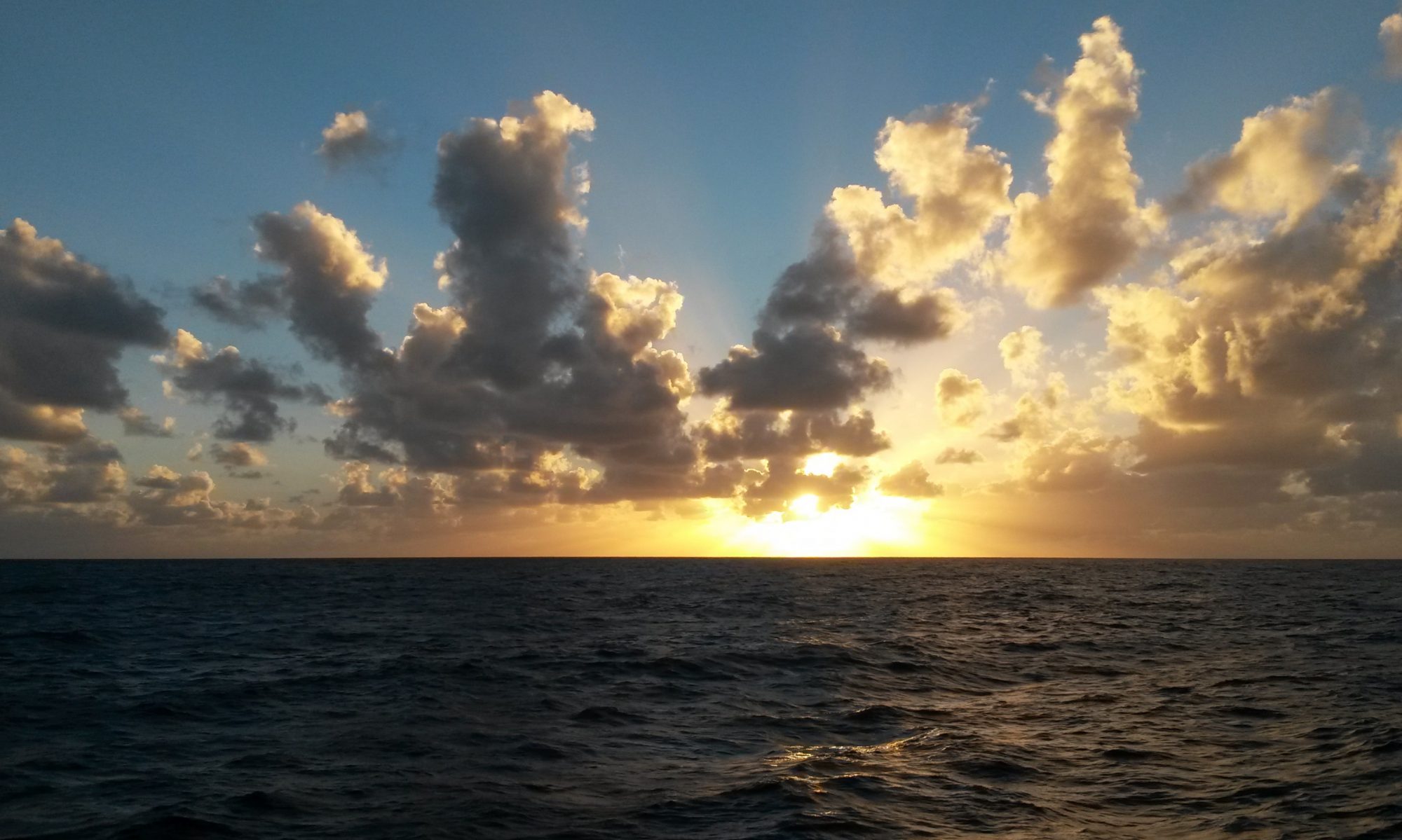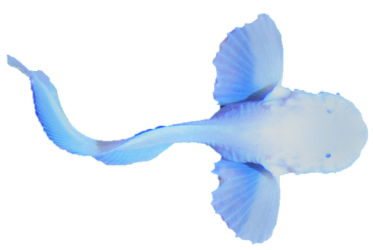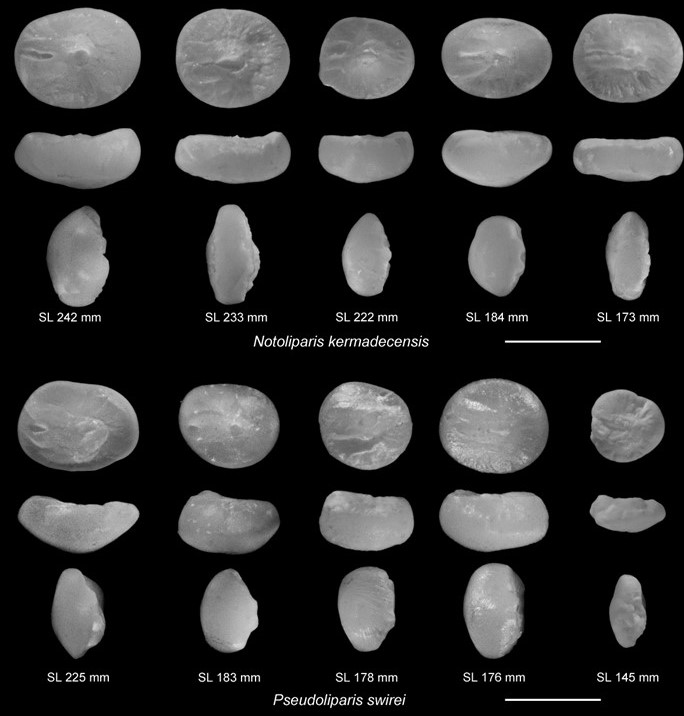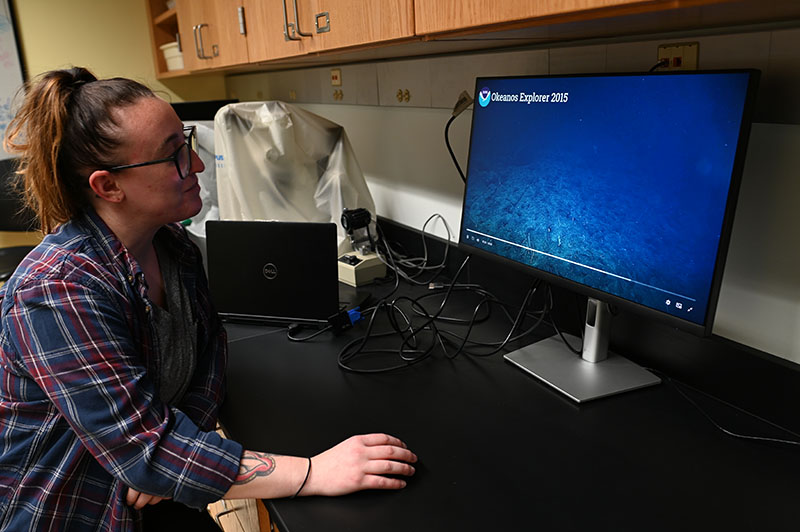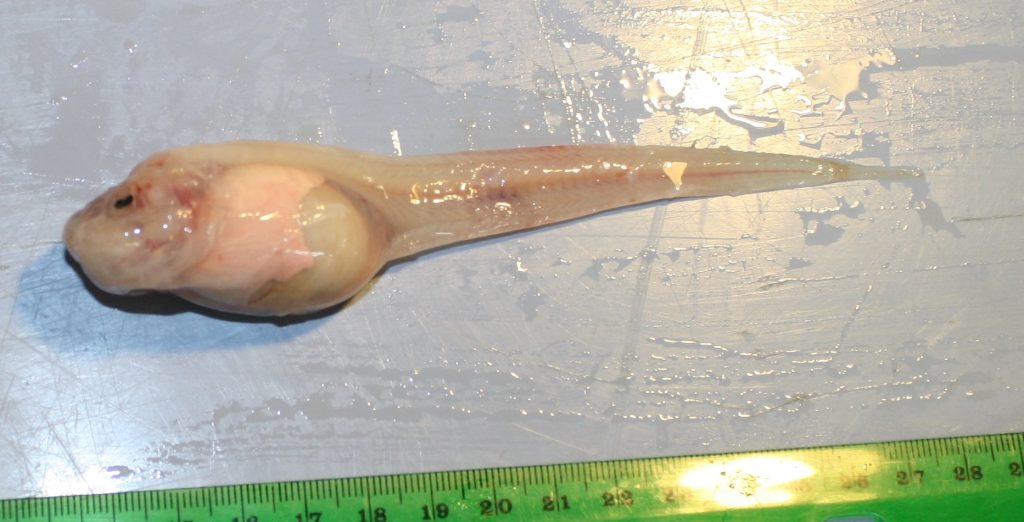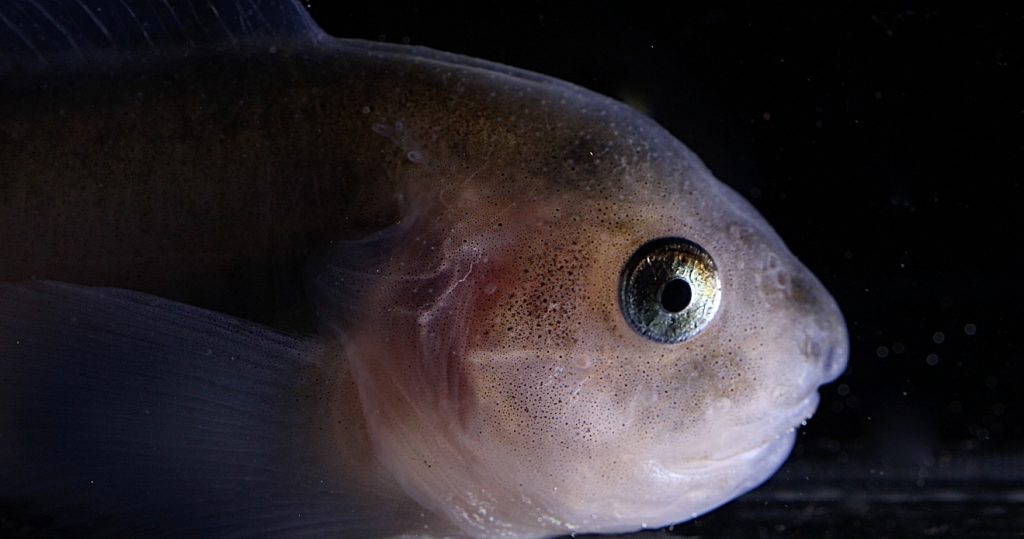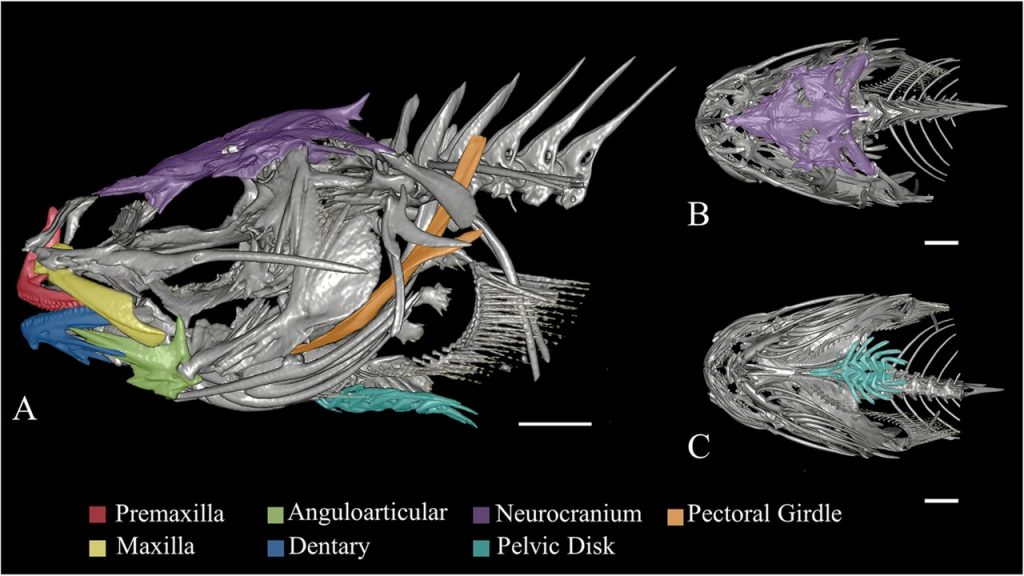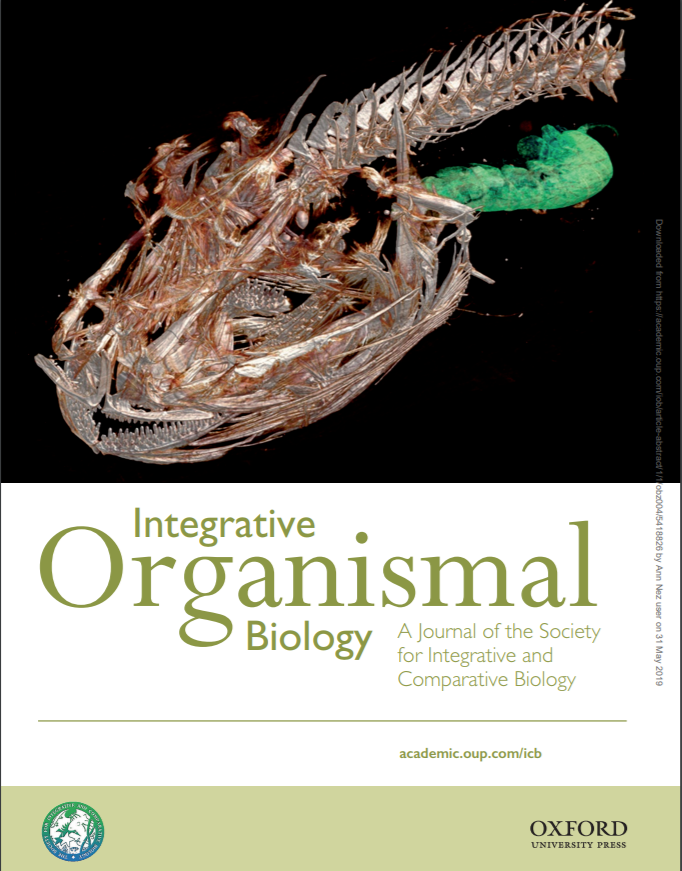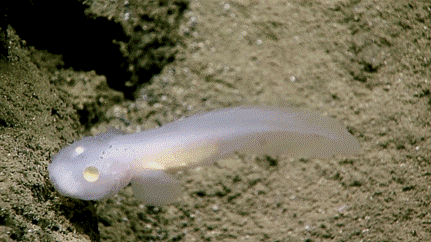Swimming crustacean eats unlikely food source in the deep ocean
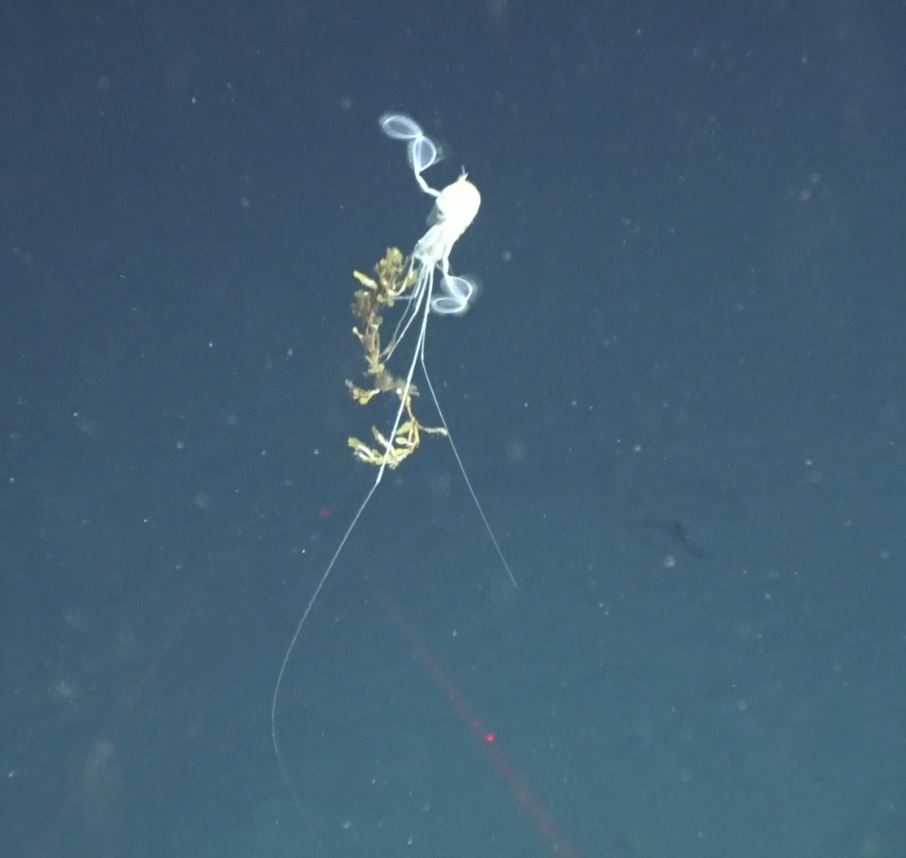
What do deep-sea crustaceans munch on? A new study published today in the journal Proceedings of the Royal Society B: Biological Sciences sheds light on a remarkable isopod species named Bathyopsurus nybelini. Using the submersible Alvin, scientists, including SUNY Geneseo Associate Professor Mackenzie Gerringer, encountered this isopod swimming 3.7 miles deep in the Puerto Rico Trench and Cayman Trough. The isopod swims—backwards and upside down—with oar-like legs as long as your fingers, carrying an unexpected food source, the sunken algae, Sargassum.
Sargassum grows at the ocean’s surface, forming floating forests of photosynthetic algae. During storms, Sargassum sinks to the seafloor, where it forms an important food source for animals like this isopod. In this new study, researchers at the Woods Hole Oceanographic Institution (WHOI), University of Montana, SUNY Geneseo, Willamette University, and the University of Rhode Island demonstrate that the isopod is specially adapted to find and feed on this sunken source of nutrients. These findings of a deep-ocean animal relying on sinking food from waters miles above prove how closely connected the surface ocean is to the deep ocean.
The isopod is expertly adapted to feeding on sunken algae, with serrated and grinding mouthparts that are ideal for tearing and gut bacteria that aid digestion. Algae like Sargassum is difficult for many animals to digest because the cell walls are built of strong, complex molecules called polysaccharides. This isopod’s gut microbiome has genes that break down these tough compounds. As found in the human gut, the microbiome provides important carbon and nitrogen nutrients for these hosts. As lead author Logan Peoples, an aquatic microbial ecologist at Flathead Lake Biological Station, shares, “Life everywhere, even in the deepest depths of the sea, is inexorably connected to the microorganisms around it.
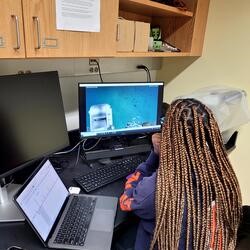
SUNY Geneseo undergraduate researcher Abisage Sekarore ’25 (right), a sociomedical sciences major, contributed to the study by answering an important question: Is there enough sunken algae to feed a community of deep-sea isopods? Sekarore analyzed video of the seafloor collected by the submersible Alvin in the Puerto Rico Trench and the Mid-Cayman Spreading Center, identifying hundreds of Sargassum fronds in the region. “Far more Sargassum was observed and recorded in the deep ocean than anticipated, with deposits found on the seafloor at depths greater than 6,000 meters, “ Sekarore said. “In just one dive, over 300 deposits were recorded, raising questions about the connection between the surface and Sargassum as a potential food source for the isopods.” The presence of Sargassum at such depths has significant implications for carbon cycling and storage.
The abundance and distribution of Sargassum in the tropical Atlantic and Caribbean Sea appears to be changing, with large blooms creating ecological and economic impacts for coastal communities in the region. With these changes, there is still much to understand about the abundance and use of Sargassum at great depths. Further studies will need to evaluate how much and where Sargassum arrives at the seafloor, how the algae’s sinking changes over seasonal and long-term timescales, and connections to the broader deep-ocean food web. Understanding the ecological impact of altered Sargassum deposition will be crucial for predicting the responses of deep-ocean communities to changing environmental conditions and for developing strategies to mitigate these impacts.
Co-lead author Mackenzie Gerringer, a deep-ocean physiologist in Geneseo’s Department of Biology, comments: “deep-ocean ecosystems seem like harsh environments, but the animals living in these habitats are well-suited to meet these conditions. This isopod illustrates that an animal in a dark and high-pressure environment at the bottom of the seafloor has evolved multiple adaptations to feed on algae that grow in a sunlit ecosystem. We’re excited to share its amazing story of adaptation and this important reminder that habitats and organisms on our planet are deeply and intricately connected.”
Funding for this work was provided by the National Science Foundation, Simons Collaboration on Ocean Processes and Ecology, the State University of New York at Geneseo, and the Woods Hole Oceanographic Institution.
Check out the full paper, open access, here: https://royalsocietypublishing.org/doi/10.1098/rspb.2024.0823
See additional coverage of this story by Science, VICE, SUNY Geneseo, and WHOI.
(Thanks to Monique Patenaude, SUNY Geneseo, and Suzanne Pelisson, WHOI, for their work on this media release.)
